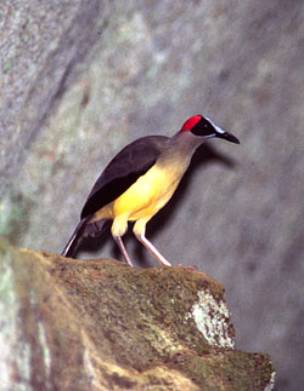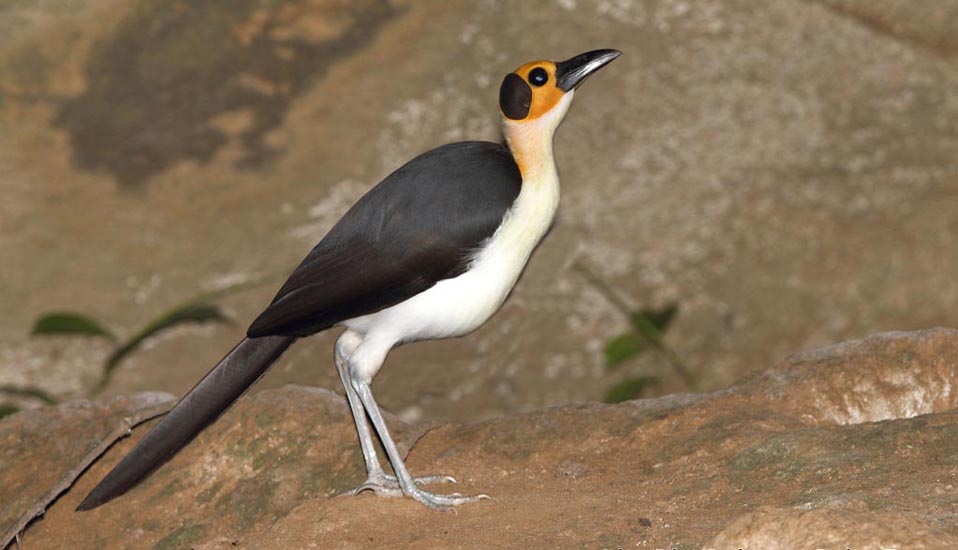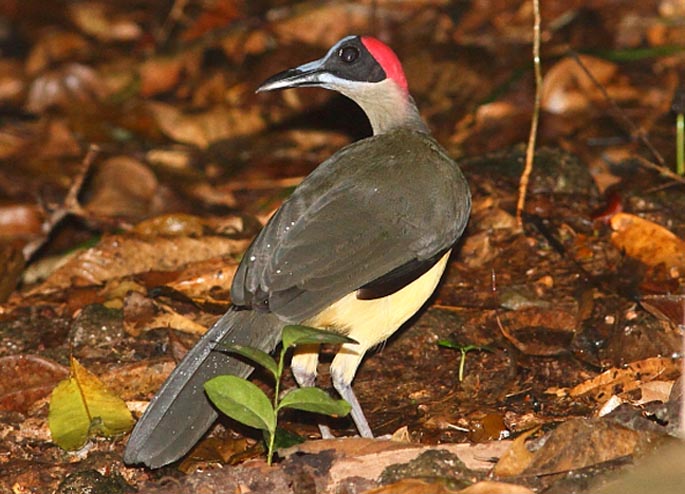
Picathartes oreas
SUBFAMILY
Picathartinae
TAXONOMY
Picathartes oreas Reichenow, 1899, Cameroon. Monotypic.
OTHER COMMON NAMES
English: Red-headed rockfowl, blue-headed picathartes, graynecked
bald crow, Cameroon picathartes; French: Picatharte
du Cameroun; German: Blaustirn Stelzenkrahe; Spanish: Picatartes
Cuelligris.
PHYSICAL CHARACTERISTICS
14 in (35 cm), 7.7 oz (220 g). Appears obviously related to preceding
species, but markedly distinct. Uniquely beautiful blue,
black, and red pattern of bare skin on head, blue extending to
base of bill. Neck, mantle, back, and tail gray. A patch of black
bristles on crown, and short ruff at base of bald head, can be
erected when bird is excited. Primaries black; underparts pale
yellow.
DISTRIBUTION
Primarily Cameroon, and contiguous Nigeria and Gabon. Recently
discovered to occur on the island of Bioko, Gulf of
Guinea.
HABITAT
Closed canopy, undisturbed rainforest, often hilly, always in
vicinity of rock formations.
BEHAVIOR
Found on or near ground, singly, in pairs, or in groups of up
to 10. Flocks have been observed bounding along, almost in
unison. Shares previous species’ curiosity towards humans.
Groups gather to roost in communal nesting sites at night.
FEEDING ECOLOGY AND DIET
Actively hunts, poking through leaf litter, pouncing on prey,
primarily arthropods (including crabs), snails, worms, frogs,
and lizards. Often follows army ants, and may poke through
bat guano.
REPRODUCTIVE BIOLOGY
Monogamous. Mud and fiber nests similar to that of whitenecked
picathartes, similarly plastered to rocks, built by both
sexes. Construction may take months, sometime a year. Clutch
of usually two variously colored speckled eggs incubated by
both parents for 24 days.
CONSERVATION STATUS
Vulnerable due to dependence on primary forest. Still abundant
in various locations, and new populations have been recently
discovered. Limited commercial exploitation as zoo
birds from 1968 to 1970. CITES Appendix I status, awarded in
1973, prevents further international trade.
SIGNIFICANCE TO HUMANS
Future “flagship” and ecotourism potential.
Photo Gallery of - Gray-necked picathartes




 Animalia Life
Animalia Life